When it comes to performance, visual quality, and the overall gaming experience on a PC, picking the correct graphics card can make a world of difference. A good graphics card can turn an ordinary device into the best gaming laptop or PC, so it is time you see which is the best graphic card you can buy.
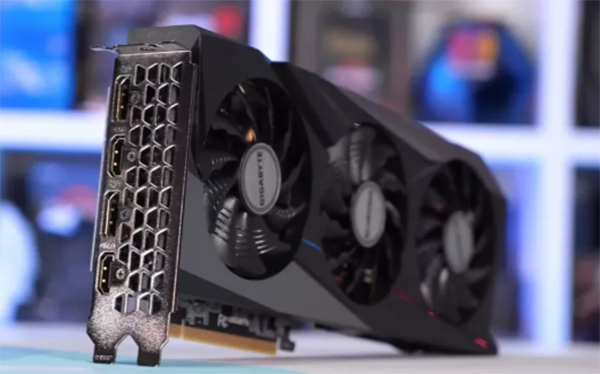
The AMD Radeon RX 6600 XT and the Nvidia GeForce RTX 3060 are two famous mid-range graphics cards available right now.
However, given their many similarities, choosing which of these two cards best meets your needs can be difficult. In this detailed review, we’ll evaluate the RX 6600 XT and the RTX 3060’s most important features and technical data.
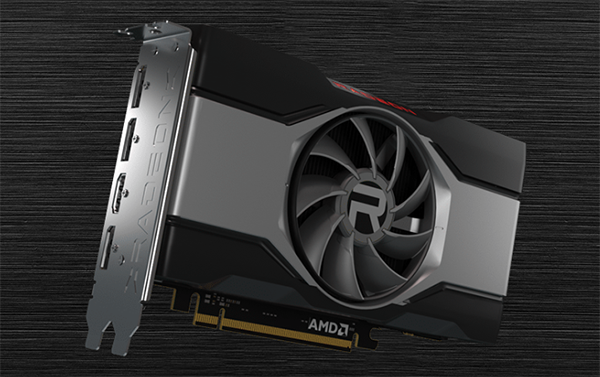

The RX 6600 XT and RTX 3060 are both mid-range graphics cards that offer strong gaming performance for their respective price points. However, there are some key differences in specifications between the two cards that are worth considering when making a purchase decision.
| Specifications | RTX 3060 | RX 6600 XT |
| Fab Process | 8nm Samsung | 7nm TSMC |
| Architecture | Ampere | RDNA 2.0 |
| GPU | GA106 | Navi 23 |
| Cores | 3584 | 2048 |
| TMUs | 112 | 128 |
| ROPs | 48 | 64 |
| Base Clock | 1320 MHz | 1968 MHz |
| Boost Clock | 1777 MHz | 2589 MHz |
| Memory Size | 12GB | 8GB |
| Memory Type | GDDR6 | GDDR6 |
| Memory Clock | 15 Gbps | 16 Gbps |
| Memory Bandwidth | 360 GBps | 256.0 GBps |
| Memory Interface | 192 bit | 128 bit |
| Power Connectors | 8-pin | 8-pin |
| Graphics Card Power | 170W | 160 W |
| Recommended PSU | 550W | 500 W |
In addition to raw performance, the features offered by each graphics card are also important to consider. In this section, we’ll compare the features of the RX 6600 XT and the RTX 3060, including ray tracing, DLSS, and other technologies.
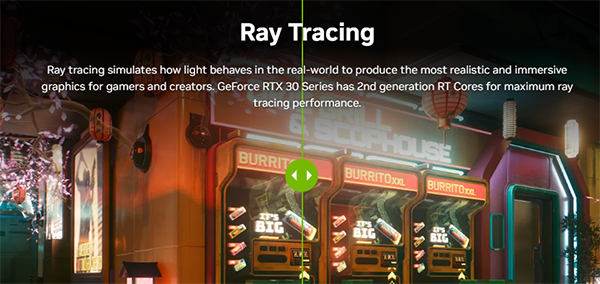
Ray Tracing is a technology that produces more lifelike and immersive images by simulating the behavior of light in real-time. Ray tracing is supported by both the RX 6600 XT and the RTX 3060, though the latter is typically regarded as being the more potent and effective option.
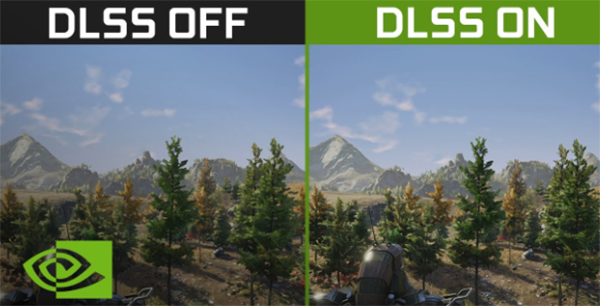
The technology known as DLSS, or Deep Learning Super Sampling, upscales low-resolution images to higher resolutions while preserving a substantial amount of quality. Higher frame rates and better game performance may come from this. Since DLSS can only be used with Nvidia graphics cards, the RTX 3060 outperforms the RX 6600 XT in titles that make use of it.
AMD’s FidelityFX Super Resolution (FSR) technology, on the other hand, gives the RX 6600 its distinctive feature. Similar to DLSS in operation, this technology is open-source and available to all game developers, independent of the hardware they are developing for. Therefore, FSR has a greater chance of becoming widely used than DLSS, especially in games that do not allow DLSS.
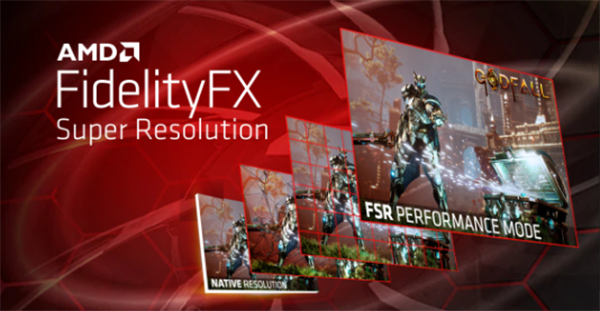
Thermal Design Power (TDP) for the RTX 3060 is 170W, compared to 160W for the RX 6600 XT. However, in actual use, a variety of variables, such as the particular model of the card, the cooling method employed, and the workload put on the card, will affect each graphics card’s power usage.
The RX 6600 XT typically uses less power than the RTX 3060 in benchmark tests run by different tech websites. This may be partly explained by the fact that the RX 6600 XT uses less electricity than the RTX 3060 because it has fewer CUDA cores and runs at a slower clock speed.
Compatibility is important when choosing a graphics card, especially if you’re building a new PC or replacing an existing one.
The RTX 3060 and the RX 6600 XT are both compatible with a wide range of motherboards and CPUs, so you shouldn’t have any issues using either card in the majority of modern systems. The exact specifications of the card you’re considering, however, must be carefully examined since some models may require a specific power source wattage or cooling system.
Regarding software compatibility, both of these GPUs work with a wide range of operating systems, including Windows and Linux. Both cards are compatible with the majority of well-known game engines, so playing your favorite games on either one shouldn’t be a problem.

In order to boost efficiency, overclocking involves going above and beyond the manufacturer’s suggested clock speeds for the GPU and memory of a graphics card. Although both the AMD Radeon RX 6600 XT and Nvidia GeForce RTX 3060 can be tweaked, the procedure and possible outcomes vary.
Using AMD’s Radeon Software tool, users can change the voltage and power parameters, as well as the GPU and memory clock speeds, for the AMD Radeon RX 6600 XT. Some users claim to have increased performance by an additional 5–10% with appropriate cooling and voltage tuning.
Using Nvidia’s Precision X1 tool or other overclocking tools from a third party, the Nvidia GeForce RTX 3060 can be overclocked. Some users claim to have increased performance by an additional 5–10% with appropriate cooling and voltage tuning.
The RX 6600 XT is covered by AMD’s standard warranty, which, based on the model, can last between two and three years. This warranty includes manufacturing and material flaws, but it excludes damage brought on by user error or unauthorized modifications.
The normal three-year warranty from Nvidia is applicable to the RTX 3060. Although there might be some limitations, this warranty covers flaws in the materials and workmanship as well as damage brought on by user error or unauthorized modifications.
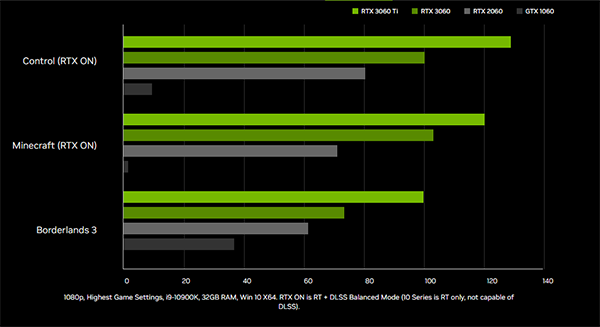
The RX 6600 XT has 2,048 stream processors, 32 compute units, and a basic clock speed of 1,968MHz. Additionally, it has 8GB of GDDR6 memory that operates at a 16Gbps memory frequency speed on a 128-bit bus.
On the other hand, the RTX 3060 has 3,584 CUDA cores, 28 streaming multiprocessors, and a base clock speed of 1,320MHz. With a memory frequency speed of 15Gbps and 12GB of GDDR6 memory, it has a 192-bit bus.

In the majority of the games we tried, the RX 6600 generally outperformed the RTX 3060 at 1080p resolution. In Battlefield V, for instance, the RX 6600 XT managed an average frame rate of 140 FPS as opposed to the RTX 3060’s 121 FPS. The RX 6600 XT outperformed the RTX 3060 in Doom Eternal, averaging 185 frames per second to the latter’s 162 frames per second.
The performance gap between the two cards was smaller at 1440p resolution, but the RX 6600 XT still outperformed the competition in the majority of the games we tried. For instance, the RX 6600 XT outperformed the RTX 3060 in Shadow of the Tomb Raider, averaging 89 frames per second to the latter’s 79. The RX 6600 XT managed an average frame rate of 62 FPS in Cyberpunk 2077 as opposed to the RTX 3060’s 57 FPS.
In most of the games we tried, particularly at 1080p resolution, the RX 6600 XT tends to perform marginally better than the RTX 3060. Although there is a slight performance difference, both cards provide excellent gameplay performance for the prices they are offered at.
The retail price for the AMD Radeon RX 6600 XT is $379, while the retail price for the Nvidia GeForce RTX 3060 is $329. The actual cost of these cards, however, can change based on availability and demand.
The Nvidia GeForce RTX 3060 offers more value for your money than the other choice. It provides comparable performance in most games and is $50 less expensive. Additionally, it offers 12GB of GDDR6 memory, compared to the RX 6600 XT’s 8GB of memory. This can be important for games with high-resolution textures or expansive open environments that need more VRAM.
It’s important to note that the RX 6600 XT has some benefits that may make the additional expense worthwhile for some users. For instance, it supports AMD’s Smart Access Memory technology, which, when used with a compatible CPU, can improve performance.
The choice between the RTX 3060 and RX 6600 XT will ultimately depend on your personal requirements and spending capacity.
The Nvidia GeForce RTX 3060 and AMD Radeon RX 6600 XT are both capable mid-range graphics cards that deliver strong performance for their associated price ranges.
It all comes down to personal preference and objectives when deciding between the AMD Radeon RX 6600 XT and Nvidia GeForce RTX 3060.
While gamers who prioritize value and AMD-specific features may prefer the RX 6600 XT, those who prioritize raw speed and DLSS technology may prefer the RTX 3060. The RTX 3060 is a better option if you want to get the most for your money and don’t require the additional features that the RX 6600 XT offers.
